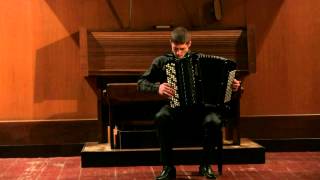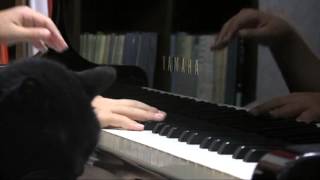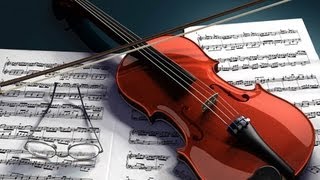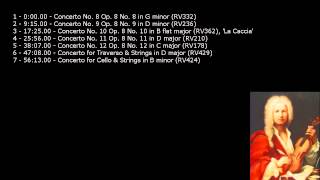Sunday, 11 January, 2026г.
















Где искать: по сайтам Запорожской области, статьи, видео ролики
пример: покупка автомобиля в Запорожье
Best of Vivaldi - Concertos & Symphonies I (The best of classical music - Part 6)
Best of Antonio Vivaldi - Concertos & Symphonies for Strings Vol. I
( The best of classical music - Part 6 )
- Beautiful Masterpieces. Study Music Playlist.
It's good for studying and concentration, reading, relaxing, doing homework and background music.
Thank you for watching this video!
PLEASE, SUBSCRIBE! ►►► https://www.youtube.com/c/stormmetal777
Join me ! on social media:
► Twitter: https://twitter.com/stormmetal777
► Facebook: https://www.facebook.com/classicalmusicbase/
► Google+: https://plus.google.com/+stormmetal777
On my channel you going to find more Classical Music! Check it out!
► https://www.youtube.com/c/stormmetal777
Check My Blog:
► http://bestclassicalmusics.blogspot.hu/
Tracklist:
00:00 - Concerto Rv109, 1. Allegro
01:23 - Concerto RV109, 2. Adagio
02:29 - Concerto Rv109, 3. Allegro Molto
03:34 - Concerto RV120, 1. Allegro non molto
05:38 - Concerto RV120, 2. Largo
07:22 - Concerto RV120, 3. Allegro
09:17 - Concerto RV126, 1. Allegro
10:46 - Concerto RV126, 2. Andante
13:02 - Concerto RV126, 3. Allegro molto
14:10 - Concerto RV129, Madrigalesco, 1. Adagio
15:02 - Concerto RV129, Madrigalesco, 2. Allegro
16:24 - Concerto RV129, Madrigalesco, 3. Adagio
17:00 - Concerto RV129, Madrigalesco, 4. Allegro moderato
17:46 - Symphony RV131, 1. Allegro
19:03 - Symphony RV131, 2. Andante
20:50 - Symphony RV131, 3. Allegro
21:49 - Concerto RV134, 1. Allegro moderato
24:13 - Concerto RV134, 2. Andante
26:02 - Concerto RV134, 3. Allegro
27:31 - Concerto RV143, 1. Allegro
29:46 - Concerto RV143, 2. Adagio
30:30 - Concerto RV143, 3. Allegro assai
32:47 - Concerto RV151, Alla Rustica, 1. Presto
34:01 - Concerto RV151, Alla Rustica, 2. Adagio
34:43 - Concerto RV151, Alla Rustica, 3. Allegro
36:16 - Concerto RV155, 1. Adagio
37:56 - Concerto RV155, 2. Allegro
39:18 - Concerto RV155, 3. Largo
42:45 - Concerto RV155, 4. Allegro
About Antonio Vivaldi (from Wikipedia)
Antonio Lucio Vivaldi (Italian: [anˈtɔːnjo ˈluːtʃo viˈvaldi]; 4 March 1678 – 28 July 1741) was a Venetian Baroque composer, virtuoso violinist, teacher and cleric. Born in Venice, he is recognized as one of the greatest Baroque composers, and his influence during his lifetime was widespread across Europe. He is known mainly for composing many instrumental concertos, for the violin and a variety of other instruments, as well as sacred choral works and more than forty operas. His best-known work is a series of violin concertos known as The Four Seasons.
Many of his compositions were written for the female music ensemble of the Ospedale della Pietà, a home for abandoned children where Vivaldi (who had been ordained as a Catholic priest) was employed from 1703 to 1715 and from 1723 to 1740. Vivaldi also had some success with expensive stagings of his operas in Venice, Mantua and Vienna. After meeting the Emperor Charles VI, Vivaldi moved to Vienna, hoping for preferment. However, the Emperor died soon after Vivaldi's arrival, and Vivaldi himself died less than a year later in poverty.
About Classical Music (from Wikipedia)
Classical music is art music produced or rooted in the traditions of Western music, including both liturgical (religious) and secular music. While a similar term is also used to refer to the period from 1750-1820 (the Classical period), this article is about the broad span of time from roughly the 11th century to the present day, which includes the Classical period and various other periods.[1] The central norms of this tradition became codified between 1550 and 1900, which is known as the common practice period. The major time divisions of classical music are as follows: the early music period, which includes the Medieval (500–1400) and the Renaissance (1400–1600) eras; the Common practice period, which includes the Baroque (1600–1750), Classical (1750–1820), and Romantic eras (1804–1910); and the 20th century (1901–2000) which includes the modern (1890–1930) that overlaps from the late 19th-century, the high modern (mid 20th-century), and contemporary or postmodern (1975–2015) eras.
Теги:
Antonio Vivaldi (Composer) Music (TV Genre) Classical Music (Musical Genre) Symphony (Composition Type) Opera (Composition Type) Concerto Bach Orchestra Composer (Profession) Beethoven Piano Plays Best Violin Mozart Minor Prelude Prelude (Composition Type) Allegro Movement Cello Johann Baroque Sebastian No1 No2
Похожие видео
Мой аккаунт


 У вашего броузера проблема в совместимости с HTML5
У вашего броузера проблема в совместимости с HTML5


